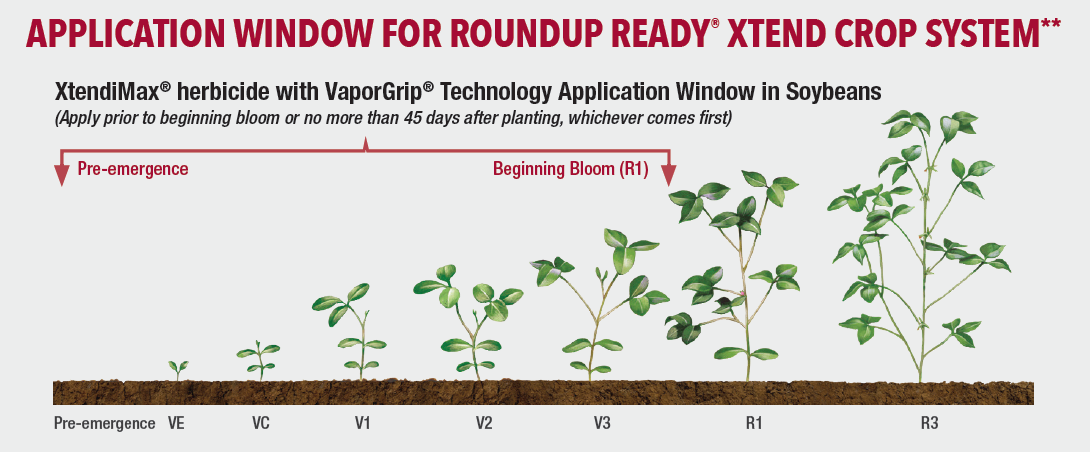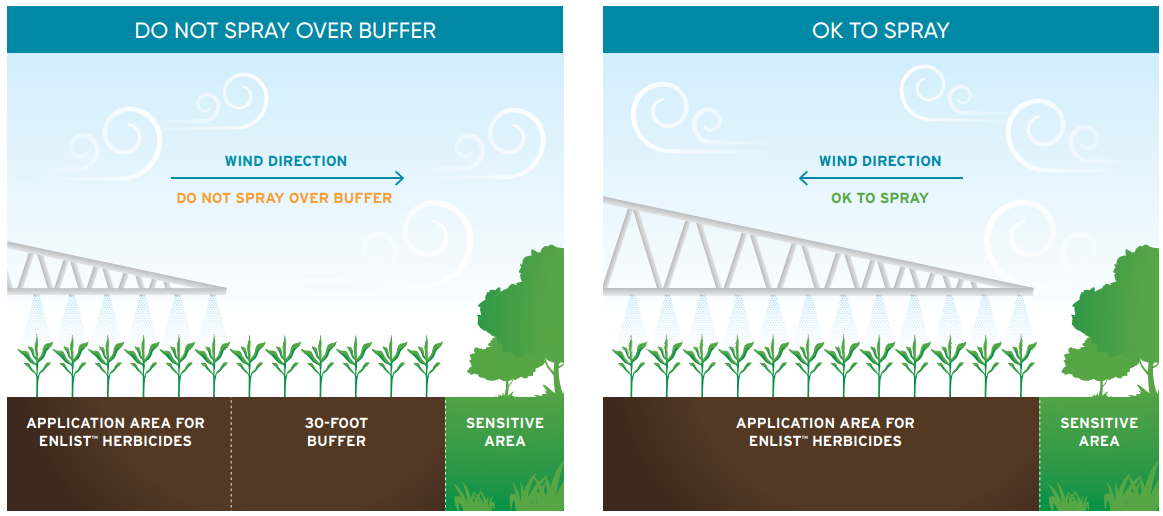ILSOYADVISOR POST
Buffer Requirements for Soybean Traits
Growers have more herbicide options than ever to fight the battle against resistant weeds in their soybean fields. With all the choices on the market today, it can become tedious to determine the differences between conventional, glyphosate tolerant, LibertyLink®, LibertyLink® GT27™, Enlist E3™ and Roundup Ready 2 Xtend® soybeans. There are many factors to consider before making a seed selection based on your specific fields and weed pressures. Many growers are trying to distinguish the differences between the use restrictions of the Roundup Ready 2 Xtend and Enlist® weed control systems.
Both systems have buffer requirements that must be followed when spraying approved herbicides. These buffer requirements change with each field, so it can be a bit of a moving target to stay ahead of. Here is a quick look at the different buffer requirements for each.
Roundup Ready 2 Xtend system. The most important factor for RR2 Xtend soybeans is to make sure you are using an approved dicamba herbicide and are certified to apply it. Currently, there are three options: XtendiMax®, Engenia® and FeXapan®. These herbicides can only be sprayed up to 45 days after planting or R1, whichever comes first, and must be sprayed with a wind speed between 3 and 10 mph.
Every field sprayed with dicamba needs a 110’ downwind buffer. If in an area with endangered species, a 57’ buffer is required on the remaining sides of the field. The buffer can extend beyond the boundaries of a field if those boundaries include the following: roads, mowed or managed areas (such as roadside rights-of-way), agriculture fields that have been prepared for planting, planted fields of corn or dicamba tolerant soybeans, or areas covered by a man-made structure with walls and/or a roof that is non-residential. Timber and other native vegetation areas cannot be included in the buffer zone.

You shouldn’t spray dicamba if the wind is blowing toward neighboring sensitive crops (including non-dicamba tolerant soybeans, grapes, tobacco, tomatoes, cucurbits and others) or residential areas. With these restrictions it is important to keep in mind not every RR2 Xtend soybean field will meet the requirements for dicamba application.
Enlist system: Enlist herbicide spray restrictions are more straightforward. To start, you must use an approved version of 2,4-D choline. There are two currently on the market: Enlist Duo® (a premix of 2,4-D choline and glyphosate) and Enlist One™ (standalone 2,4-D choline). For the buffer zones, a 30’ downwind buffer is required for a sensitive area including: wooded area, pasture, roadside ditch, lawns, and tree plantations. Enlist herbicides should not be sprayed when adjacent susceptible crops (including cotton without the Enlist trait, grapes, cucurbits, tomatoes, tobacco, other fruiting vegetables) are downwind. If there is an adjacent susceptible crop, you should wait for the wind to change directions before spraying. Note, a key difference between Enlist herbicides and dicamba is that soybeans are not considered a sensitive crop when spraying Enlist but are when using dicamba.

There is a whole gamut of criteria that go into selecting a herbicide package for your farm and we encourage you to learn more about the differences between these herbicide systems. For more information on tank mix partners, approved nozzle types and other general requirements visit with your retailer.





Comments
Add new comment